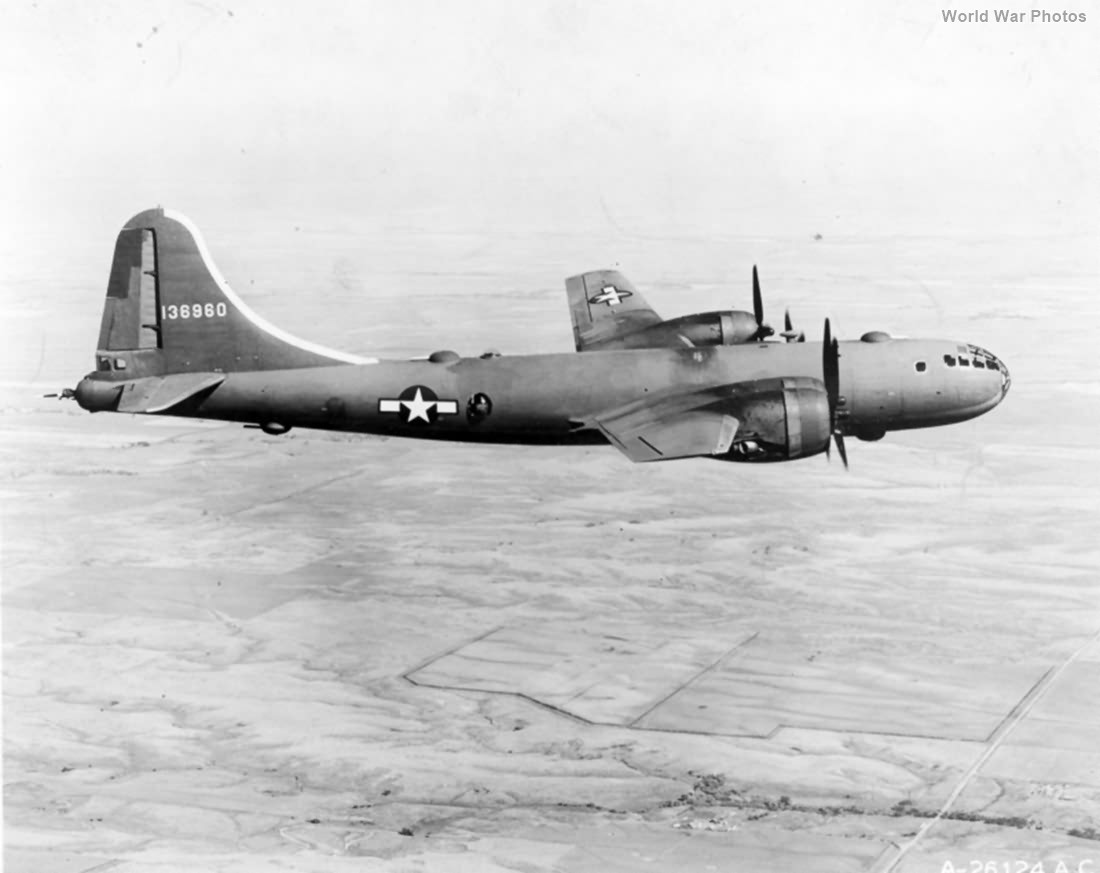Following the three B-29 prototypes, 14 service test aircraft were constructed at Boeing’s plant in Wichita, Kansas, and designated YB-29s. The first of these, 41-36954, was completed on April 15, 1943 and made its maiden flight on June 26, 1943, with the nickname “Spirit of Lincoln” on its nose. It initially used four R-3350-21 engines with three-blade propellers, similar to the prototypes. This aircraft was later modified into the XB-39, where its engines were replaced with liquid-cooled Allison V-3420 engines for testing. However, despite an increase in speed, the performance improvements were not sufficient to warrant mass production.
The YB-29s differed from the prototypes in many ways, particularly in defensive armament. The original Sperry retractable turrets system, tested on the prototypes, was replaced by General Electric’s system of non-retractable, remotely operated turrets. These turrets were controlled using computerized gunsights, allowing gunners to aim and fire remotely from various stations in the aircraft. The five turret positions—upper forward, upper aft, lower forward, lower aft, and the tail—were each armed with twin 0.50-caliber machine guns, while the tail turret also featured a 20mm cannon, though this was removed from most aircraft later on. Gunners operated the turrets using reflector gunsights wired into the electrical system, which allowed precise aiming through gyroscopes and targeting mechanisms.
The upper forward turret was typically operated by the bombardier, while other turrets were controlled by gunners stationed throughout the aircraft. The central fire control gunner managed a master gunnery panel, assigning turrets to gunners based on their visibility of attacking planes. The tail turret was the only position that was solely operated by the tail gunner.
This advanced remote-controlled system reduced the crew size to 11, consisting of the pilot, co-pilot, bombardier, navigator, flight engineer, radio operator, radar operator, central fire control gunner, two side gunners, and a tail gunner. The complex system required increased electrical power, which added weight to the aircraft, further delaying production. Additionally, the three-blade propellers on the early models were replaced by four-bladed Hamilton-Standard propellers during the service test phase.
The YB-29 aircraft were distributed among the 58th Bomb Wing and its associated groups, with several of them assigned to bomb groups based in Kansas. These included 41-36955 and 41-36956 to the 40th Bomb Group, 41-36958, 36959, and 36962 to the 444th Bomb Group, and 41-36961 to the 468th Bomb Group.
One notable incident involved 41-36967, which crashed during a test flight in January 1944. After losing all four engines, the pilot, Colonel Childress, had the crew bail out and successfully crash-landed the aircraft alone, avoiding civilian casualties and surviving the crash.
Other YB-29s had various roles, including 41-36957, which was converted for use as a bomber escort, and 41-36963, which was sent on a long-range flight to Britain, later modified to fly fuel transport missions in India during the war. Some, like 41-36964, were retained by Boeing for training and systems development, with limited service history.
